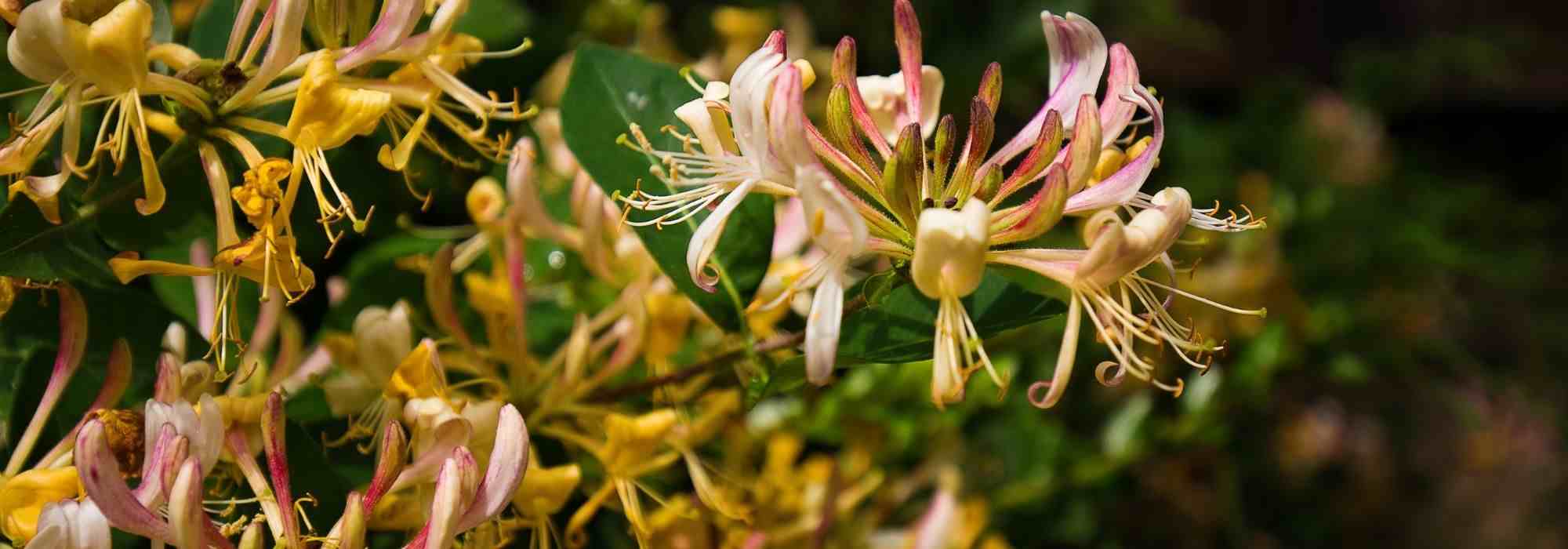
5 climbing plants to grow in pots on a north-facing balcony
Our selection of climbing plants for shaded areas
Contents
Just because a balcony is north-facing doesn’t mean it can’t host plants: some plants, such as climbing plants that enjoy shade, will indeed thrive there, adding a beautiful aesthetic and natural touch.
These climbing plants grown in pots tolerate low light, adapt to cold, and withstand windy conditions.
A few simple steps for successful pot cultivation (watering, fertilising, pruning) will help you create a lovely green atmosphere on your balcony, despite the lack of sunlight.
Here is our selection of 5 climbing plants to adopt for their foliage, flowering, or even their fragrance on a shaded balcony.
Honeysuckle, a unique fragrance
Honeysuckles are climbing, voluble plants with fragrant flowering that are highly valued in the garden. In summer, their colourful tubular flowers brighten up shaded or semi-shaded areas.
Easy to grow and fast-growing, they can reach heights of 2 to 6 metres and are very hardy (generally down to -15°C), allowing them to survive winter on a north-facing balcony:
- Lonicera henryi adorns itself with pink-orange flowers in June and July;
- Lonicera henryi ‘Copper Beauty’ produces lighter flowers, yellow to cream, during the same period;
- Lonicera Japonica ‘Mint Crisp’ reveals yellow flowers from June to September, accompanied by beautiful variegated green-yellow foliage.
The evergreen foliage of honeysuckles allows them to maintain their aesthetic appeal even during the cold season.
To successfully grow honeysuckle on a balcony, choose a large pot with well-draining, fertile substrate.
Robust and not very susceptible to diseases, the plant will only require a few applications of fertiliser during its growth and watering in case of prolonged drought.
Honeysuckle will be trained on a trellis or lattice to quickly dress up walls and railings. It will also serve as a privacy screen to provide a bit more intimacy on a balcony.

Lonicera henryi, Lonicera henryi ‘Copper Beauty’ and Lonicera japonica ‘Mint Crisp’
Ivy, a lovely decorative foliage
They don’t always have a good reputation due to misconceptions about ivies! However, ivies are not lacking in advantages. These climbing lianas with climbing roots are ideal for greening shaded areas all year round, thanks to their evergreen triangular or lobed leaves.
The autumn flowering and fruiting of ivy also attract pollinating insects and birds, making it an ideal plant for biodiversity.
In shaded situations, opt for varieties with bright green foliage:
- the common ivy Hedera helix, with dark green leaves, slightly marbled with cream;
- the Colchian ivy Hedera colchica, an impressive variety with shiny green foliage;
- Hedera helix ‘Marginata Elegantissima’ or ‘Goldchild’, smaller varieties (not exceeding 2.5 metres in height) ideal for pot cultivation, whose foliage will be variegated with cream or yellow margins in a bit of sunlight.
Growing ivy is simple, even for beginner gardeners. The plant is not demanding and grows autonomously, only needing to be watered when its substrate becomes dry.
Regular pruning will also help contain its exuberant growth.
Ivy can easily cover a healthy wall without damaging it, but conversely, it can harm more fragile materials.
Very hardy, this climber can easily spend the winter outdoors on the balcony.

Hedera helix (photo H. Zell), Hedera helix ‘Marginata Elegantissima’ and Hedera helix ‘Goldchild’
Discover other Climbers for pot-growing
View all →Available in 0 sizes
Available in 0 sizes
Available in 2 sizes
Available in 1 sizes
Available in 1 sizes
Available in 1 sizes
Available in 1 sizes
Available in 1 sizes
Available in 0 sizes
Available in 1 sizes
Climbing Hydrangea, to brighten shaded areas
Climbing hydrangeas or climbing hydrangeas are lianas that cling spontaneously thanks to climbing roots shaped like clamps. They are thus perfect for dressing a wall on a north-facing balcony during the beautiful season.
The flowering in corymb occurs in spring or summer. However, it should be noted that it can take 2 to 3 years for the climber to establish itself properly.
Choose from the varieties:
- Hydrangea anomala ‘Crug Coral’, with the stunning pink and cream hues of its flowers in June;
- Hydrangea petiolaris ‘Flying Saucer’, which adorns itself at the same time with large umbels of fluffy white flowers;
- Hydrangea petiolaris ‘Silver Lining’, with variegated grey and white foliage that serves as a backdrop for immaculate flowering in May and June.
The deciduous foliage, initially green, takes on yellow or purple hues before falling. A light pruning after leaf drop will help maintain a harmonious silhouette.
To maintain a climbing hydrangea, apply fertiliser in spring and install mulch at the base of the plant, which will help keep the soil cool and moist in summer.
Very hardy below -15°C, the climbing hydrangea is ideal for cool exposures and for brightening shaded corners, away from the scorching rays of the sun.
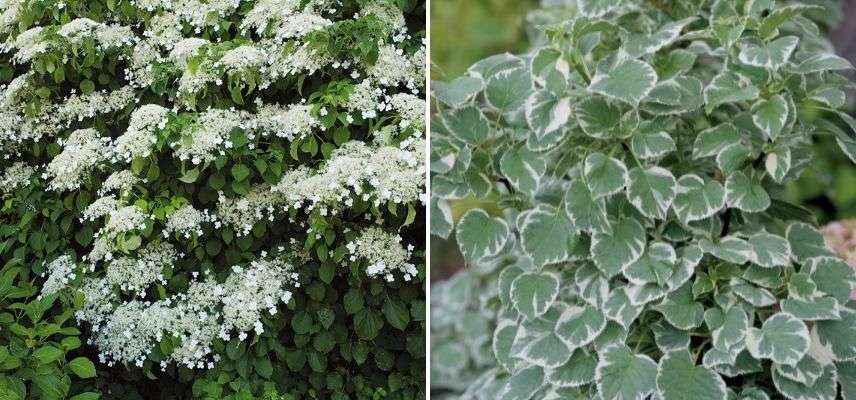
Hydrangea petiolaris and Hydrangea petiolaris ‘Silver Lining’
Virginia creeper, vibrant autumn colours
The Virginia creeper clings to its support using a suction cup system, without causing any damage. It is ideal for quickly dressing a north-facing wall. Some modest-sized varieties can be grown in pots.
The summer flowering of the Virginia creeper is subtle, but its deciduous foliage transforms in autumn into vibrant shades of yellow, orange, or red.
- Parthenocissus tricuspidata ‘Lowii’ offers beautiful evolving foliage, initially purple in spring, apple green in summer, and then bright red in autumn;
- ‘Minutifolia’, another variety of moderate size, displays shiny green foliage in summer, turning bronze-purple in autumn;
- The blue-fruited Virginia creeper not only offers beautiful autumn colours but also produces very decorative small turquoise berries that turn purple.
The fruiting in the form of colourful berries adds further aesthetic interest to this climbing plant.
To grow the Virginia creeper in a pot, place it in a large container filled with clay pebbles and a substrate made of a mix of potting soil and garden soil.
Low-maintenance and very hardy, it will bring a lush touch of greenery to a north-facing balcony.

Parthenocissus tricuspidata ‘Lowii’, Parthenocissus tricuspidata ‘Minutifolia’, and Ampelopsis glandulosa var. maximowiczii with its blue fruits (photo Wikipedia)
Stauntonia purpurea, a delightful fragrant flowering
Stauntonia purpurea is a vigorous liana native to Taiwan. It is a relative of other climbing plants thriving in shaded areas: holboellia and akebia.
Its foliage is lobed and glossy green, remaining evergreen and decorative throughout the year.
Flowering occurs in spring, in April/May. The plant is adorned with charming little drooping purple bells, exuding a delicate rose fragrance. This flowering may be followed by fruiting of the same colour in autumn.
With moderate hardiness down to -10°C, it should ideally be protected from cold winds. The plant prefers a rather acidic substrate that remains cool (moist) in summer.
Fast-growing, Stauntonia purpurea is easy to grow and can reach several metres in height at maturity. It should be grown on the balcony in a large container and trained to support its voluble stems. Regular pruning will help contain its imposing silhouette.

Stauntonia purpurea (photo Shihchuan), Holboellia coriacea (photo Peganum) and Akebia quinata ‘Silver Bells’ (photo PBK)
- Subscribe!
- Contents
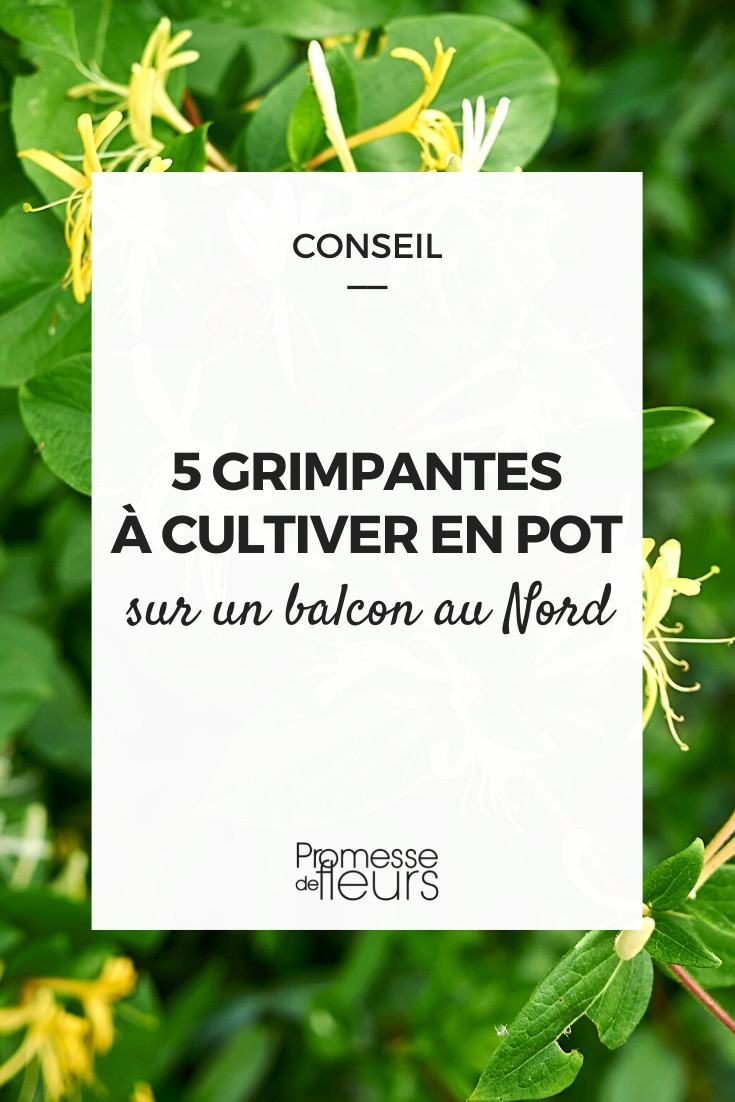
































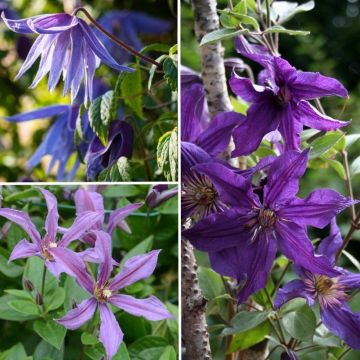
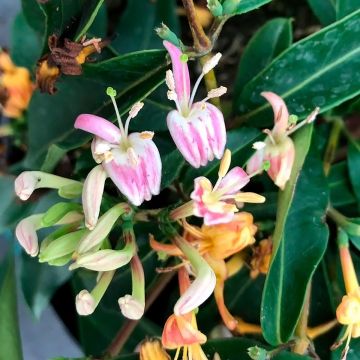

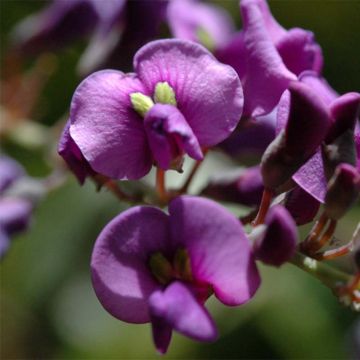
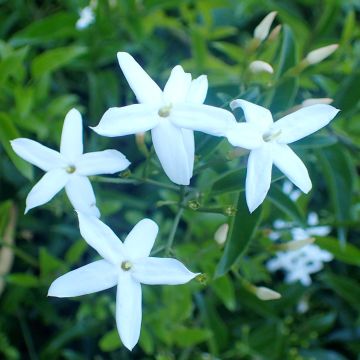
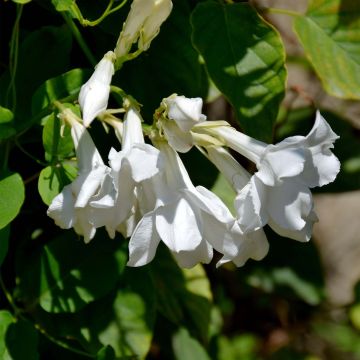
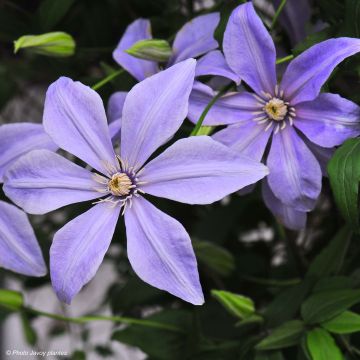
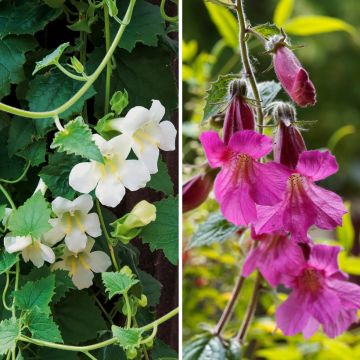
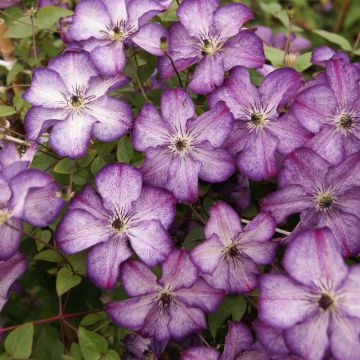
Comments